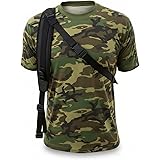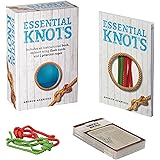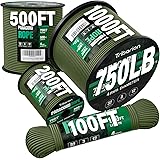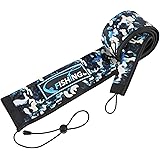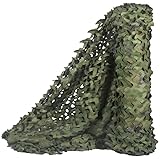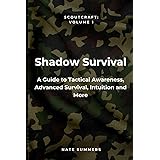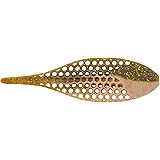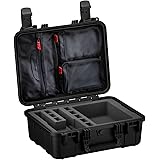Crafting a Quick Survival Bow: Your Essential Bushcraft Guide
In challenging outdoor scenarios, the ability to secure food or defend oneself can hinge on readily available tools. When traditional equipment is lost or unavailable, the need for an immediate, functional solution becomes paramount. The concept of a survival bow, as demonstrated in the video above, offers a pragmatic answer to this critical dilemma, focusing on immediate utility rather than long-term durability. This comprehensive guide delves deeper into the principles and techniques required to construct your very own quick survival bow, ensuring you are better prepared for unexpected wilderness situations.
Understanding the Philosophy of a Survival Bow
The core philosophy behind making a quick survival bow is its transient nature. Unlike finely crafted traditional bows designed to last for years, a survival bow is intended for immediate, short-term use in an emergency. Its purpose is not aesthetic perfection but rapid functionality, allowing you to acquire resources or deter threats without delay. This approach emphasizes speed and resourcefulness over intricate carving and material selection, making it an indispensable skill for anyone focused on bushcraft or emergency preparedness. It truly embodies the “quick and dirty” ethos of practical survival. Therefore, do not spend excessive time trying to achieve a flawless finish; efficiency is key.
Selecting the Best Wood for Your Survival Bow
The first critical step in crafting a functional survival bow involves selecting the appropriate wood. As highlighted in the video, a straight willow branch is an excellent choice due to its inherent flexibility and widespread availability in many environments. Other suitable green woods for a quick survival bow include young ash, oak, hazel, or even juniper, provided they are relatively knot-free and straight. Always seek out a branch that is free from significant twists, cracks, or large knots, as these imperfections can compromise the bow’s integrity and performance. The chosen branch should also be of an appropriate diameter, allowing for enough material to shape the limbs effectively while retaining strength.
Essential Tools for Crafting Your Emergency Bow
While specialized tools are beneficial for traditional bow making, a survival situation dictates using what you have. A robust chopping tool, such as a machete, as suggested in the video, is absolutely indispensable for this project. Other viable alternatives include a sharp axe, a large knife, or even a sturdy rock with a sharp edge, if nothing else is available. The quality of your cuts will directly impact the bow’s performance, so ensure your chosen tool is as sharp as possible. Furthermore, a smaller knife or a sharp stone could be helpful for carving the nocks, adding precision to those crucial areas. Always exercise extreme caution when handling sharp implements in the field.
The Anatomy of a Functional Survival Bow
To effectively craft a survival bow, understanding its basic anatomy is crucial. The stave, which is your chosen branch, comprises several key parts: the belly, the back, the limbs, and the handle or riser. The belly is the side of the bow that faces you when you draw, and this is the surface that undergoes compression during the shot. Conversely, the back of the bow, which faces away from you, endures tension and is critically important for structural integrity. As emphasized, the back should be left completely untouched with its bark on, preserving the wood’s natural fibers to prevent breakage. The limbs are the parts of the bow that bend, and they must be carefully tapered for efficient energy transfer. Finally, the handle is the central, thicker section where you will grip the bow.
Preparing Your Stave for Archery
Once you have selected your ideal branch, the preparation of the stave begins. Firstly, meticulously cut off all additional branches and twigs to create a clean, straight piece of wood. Next, carefully begin to chop or carve down each side of the stave, gradually tapering the limbs towards the tips. It is vital to ensure that the middle section, which will become your handle, remains significantly thicker than the limbs, providing a solid grip and preventing it from bending. Remember, the goal is to make the limbs bend evenly and smoothly, distributing stress across the entire length of the active bow limbs. The back of the bow, as previously mentioned, should remain completely unaltered to maintain its structural integrity.
Stringing Your Emergency Bow and Brace Height Considerations
With your stave shaped, the next step involves creating and attaching a bowstring. Begin by carving quick, shallow notches near the ends of each limb, ensuring they are deep enough to securely hold the string but not so deep as to weaken the limb. For the bowstring itself, paracord is an excellent modern option if available, though natural fibers like twisted bark or plant material can also be used in a true survival scenario. Wrap the string securely around the notches, ensuring it is taut enough to hold its position. A key aspect of a quick survival bow, particularly with green wood, is to maintain a very low brace height—the distance from the bowstring to the deepest part of the handle when unstrung. This minimizes stress on the green wood, which is more prone to taking a permanent set or breaking under high tension, optimizing its temporary performance.
Mastering the Survival Bow Grip and Shooting Technique
Even with a rudimentary survival bow, proper shooting technique enhances accuracy and effectiveness. The video demonstrates a pinch grip, where two fingers are placed below the arrow nock. This allows for a direct and firm hold on the arrow, crucial for consistency with a simple setup. When drawing, ensure your fingers are positioned correctly on the bowstring, pulling back smoothly and consistently to the same anchor point each time. Focus on releasing the string cleanly, allowing the bow’s energy to propel the arrow forward. Practicing this grip and release repeatedly, even without an arrow initially, will build muscle memory and improve your overall proficiency with your emergency bow.
Beyond the Basics: Enhancing Your Survival Archery Skills
While a quick survival bow is designed for immediate utility, understanding its limitations and potential enhancements is valuable. While the video focuses on the bow itself, remember that effective archery also requires arrows, which can be fashioned from straight shoots and tipped with sharpened stone or wood. Continuous practice, even with a basic bow, will significantly improve your accuracy and hunting potential. Always prioritize safety when handling any bow, understanding that even a simple survival bow can be a potent tool. Developing proficiency with a quick survival bow truly elevates your bushcraft capabilities, offering a vital resource for self-reliance in the wild.




